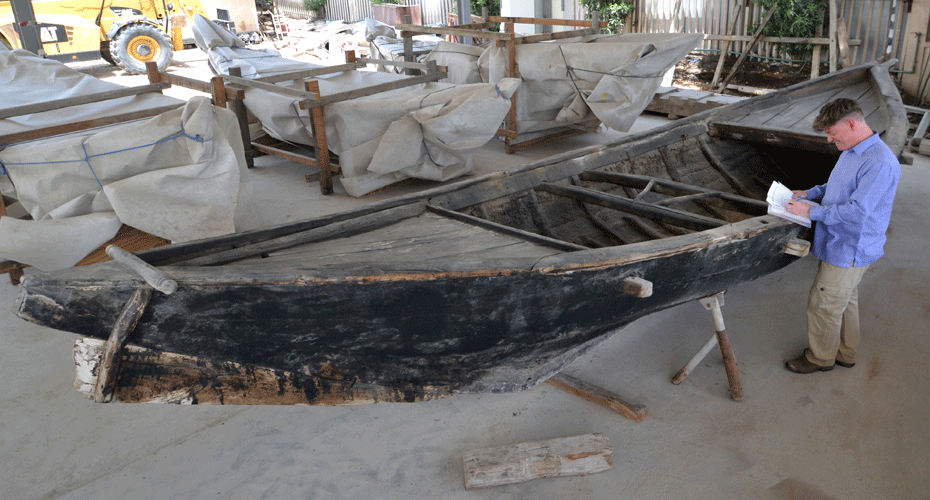Research projects
Sewn Boats of the Qatar Museums Collection
By kind permission of Qatar Museums, Doha and supported by University College London-Qatar. Co-Investigators: Dr John P Cooper, Mr Alessandro Ghidoni (University of Exeter), Dr Chiara Zazzaro (University of Naples, “l’Orientale”).
Project summary
This project documented and described for the first time a number of important sewn-plank watercraft acquired by Qatar Museums (QM) over the past decade. The accession of these vessels constituted a unique and important preservation of a vernacular technological tradition that has vanished from much of the Western Indian Ocean region where once it was widespread. In 2013, QM acquired a number of baggāras (بقارات) from Iran of a type once found also in Arabia, particularly Qatar and the UAE. These double-ended vessels are almost entirely fastened together using continuous stitching and lashing in combination with grassy and rope wadding, with dowels drilled through the timbers. Iron fastenings occur only where they are far from contact with water, hinting at the builders’ cautious attitudes to this ferrous technology. Meanwhile, the method of attaching both garboard strakes to the keel at once in a single stitching action is otherwise unknown among Indian Ocean sewn boats. The use of bituminous coatings inboard and out is likewise an important feature of these craft. QM also acquired two kettuvallams from Kerala, India. Although these vessels are still made and used in Kerala, they nevertheless represent and important museum record. The project established an account of the construction of these remarkable vessels, together with a visual documentation for the first time in the form of 3D photogrammetry models and construction and naval lines drawings.

